Data localization brings huge investment into data center market in India ...who will introduce the unmanned Data center?
By MYBRANDBOOK
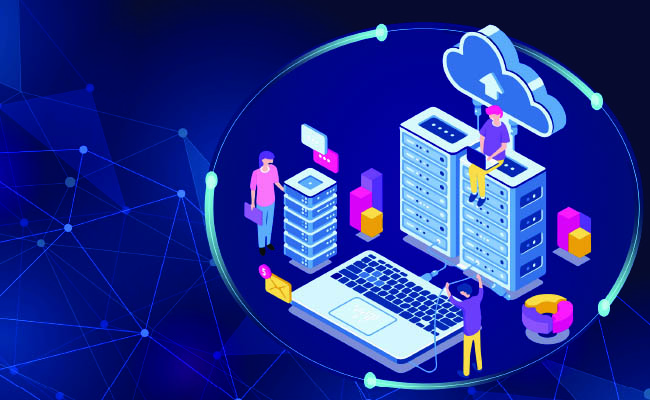
India’s digital is economy expected to touch $1 trillion by 2025, with the government planning to triple India’s installed power capacity for data centres from the existing 375MW by 2025, there is a $4.9 billion investment opportunity by 2025 to set up data centre infrastructure. All the credit comes with the growing digital economy, increased investor interest and stable long-term returns. The era of automation and AI has shown that today’s dream can become tomorrow’s reality.
DC industry is expanding at an unprecedented pace, it will generate a greater need for hyperscale DCs located strategically across the globe. The DC parks are getting established far from large metros. We are witnessing a higher growth into hyperscale facilities, with the demand to support the platforms of the worldwide web, social media, streaming, cloud gaming, AI, machine learning and, inevitably, hyperscale cloud providers too.
With the all biggies eyeing to invest in the datacenter business including Reliance Industries, Adani Group and we have already seen how Hirananadani backed Yotta is investing heavily into this business. At the same time the global giant Digital Realty also is exploring the opportunity. According to McKinsey, core digital sectors in India, such as IT and digital communication services are projected to double in size by 2025 to contribute $355-435 billion to the economy.
The recent pandemic has accelerated the move of companies large and small to the major cloud services. They are drawn by the scalability and accessibility of these platforms that are in place to assist with the complexities of a fully distributed workforce. Whether hosting previously in-house applications or utilizing full Infrastructure-as-a-Service models, many of these key providers have risen to the forefront of importance to global business.
Factors influencing the data center market to grow
• Indian consumers are among the major consumers of social media services.
• Facebook and other social network platforms to store its data and skyrocketing data center demand in India.
• The IaaS adoption is likely to grow at a CAGR of 20% between 2020 and 2025.
• The data localization mandate is increasing data center business in India as there is a need to store over 60% of data that is being stored in data centers across the globe.
• The Reserve Bank of India’s norms on data localisation has necessitated the need for data centres.
As per Gartner’s latest forecast, end-user spending on global DC infrastructure is expected to touch $200 billion in 2021, rising 6% over 2020. Since most companies focussed on keeping operations going in 2020, DC growth was relegated to the back burner due to market conditions and enterprises extending the life cycle of installed equipment. With this there will a sizeable amount investment will go into DC infrastructure development and is expected to grow annually till 2024.
Key Developments
• Local DC owners dominate the colocation market.
• The growth is attributed to the increasing investment on the cloud, big data, IoT, and AI based technology will increase the demand for application-specific infrastructure solutions in the Indian region.
• The rise in the number of critical applications hosted on data centers operated by enterprises is expected to increase the adoption of all-flash and hybrid arrays.
• India is expected to see at least 30 large hyperscale data centres constructed over the next three years.
• India has around 375MW installed power capacity for data centres, which may triple by 2025.
Key Companies Mentioned in this Report Include
• IT Infrastructure Providers –Atos, Broadcom, Cisco, Dell Technologies, Hewlett Packard Enterprise, Huawei, IBM, Lenovo and NetApp
• Construction Service Providers - AECOM, Sterling & Wilson, DSCO Group, Nikom Infra Solutions and L&T Construction
• Support Infrastructure Providers – ABB, Caterpillar, Cummins, Eaton, Delta Group, Legrand, NetRack Enclosures, Riello UPS, Rittal, Schneider Electric, Stulz and Vertiv
• Data Center Investors - Bharti Airtel (NXTRA DATA), Bridge Data Centres, Colt Data Centre Services (Colt DCS), CtrlS, ESDS, GPX Global Systems, NTT Global Data Centers, Pi DATACENTERS, Rack Bank, Reliance Communications, Sify Technology, ST Telemedia Global Data Centres (STT GDC), Streamcast Group, Web Werks and Yotta Infrastructure Solutions.
Going forward, Indian’s Data center Market is going to make a huge impact on the national economic landscape and expected to Cross over $4.5 Billion by 2025. Only few Data Centers in India are focusing on the renewable energy and energy-efficient power and cooling solutions. As the growth of IoT and remote work is driving the cloud services market to an incredible double digit mark, but in order to properly capitalise this explosion of data it’s important to scrutinise where the data is being held.
Key Highlights :
• Over $2 billion cumulative revenue opportunity for data center construction contractor through India market during 2020-2025.
• India data center colocation market revenue to witness a CAGR of over 15% between 2019-2025, aided by significant developments in hyperscale data center colocation space.
• Maharashtra continues to dominate with 60% market share in investments, followed by Karnataka, Telangana, and Andhra Pradesh.
• Data localization will necessitate storing all consumer-related data that includes the need for Facebook and other social network platforms to store its data and skyrocketing data center demand in India ,as there is a need to store over 60% of data that is being stored in data centers across the globe. The spread of Covid-19 has significantly increased data traffic from March 2020.
• The rapidly-evolving digital economy is forcing enterprises to address more questions and challenges regarding their IT infrastructure. Artificial intelligence is no different. The way we have to think about it has evolved as well. Here’s what IT departments need to consider as they optimize AI for the digital economy.
Challenging Times ahead for the DC Companies:
There is a need for hosted AI solution for a new data-centric infrastructure architecture that puts data at the center of the architecture to localize data aggregation, staging, analytics, streaming, and management at global points of business presence. Additionally, architecture design must address data gravity challenges when deploying large-scale data analytics and AI solutions.
There is a need for the Platform support, storage optimization, security, protection, and cost-effective scalability are critical elements of success needed when enterprises bring AI, analytics platforms and applications to the data. According to Gartner, by the end of 2024, 75% of enterprises will shift from piloting to operationalizing AI, driving a 5X increase in streaming data and analytics infrastructures.
Dave McCrory, Vice President of Growth at Digital Realty, explained that “Data gravity is growing at an incredible rate, and the data creation lifecycle is experiencing growth virtually every area.” For example, according to 451 Research, by 2022, 87% of IT leaders will maintain local copies of customer and transaction data for compliance. This macro trend of data localization amplifies the effects of data gravity, and the result increases the number of locations where data is aggregated. Enterprises cannot expect optimal results from AI if their AI compute is not located in close proximity to their data.
EdgeConneX, the leading data centre operator with 50 facilities in 30 markets around the world, will bring expertise and technology solutions to the venture and leverage Adani’s expertise in full-stack energy management, renewable power and real estate development, as well as its experience in building and managing large infrastructure projects throughout India.
Newer investment and disruptions to happen in 2021-22
@ Princeton Digital’s Navi Mumbai project to have 48 megawatt data centre in next two years will spread across two buildings. The new campus is designed to serve leading hyperscalers including internet and cloud companies in the fast-growing Mumbai region in India and is scheduled to be service-ready in 2022.
@ Samsung begins production of power-efficient SSD for data centres
@ Reliance Jio planning to build data centre in Uttar Pradesh with $950 million investment. A 20-acre plot had been allotted to the company, and the project is to cost approximately Rs 7,000 crore ($1 Billion USD approx.). This data centre to be powered by its own renewable energy plant.
@ Adani Group forms equal JV with US based EdgeConneX to build hyperscale data centre parks in the six cities including Chennai, Navi Mumbai, Noida, Vizag and Hyderabad . It’ll also develop edge data centres pan-India. The pan-Indian platform of hyperscale and hyperlocal data centers will largely be powered by renewable energy.
@ India’s directive for data localisation has also influenced data center expansion plans by the likes of AWS, Airtel, Oracle, Google, Yotta and Jio in partnership with Microsoft Azure.
@ Japanese tech firm NTT acquires 6-acre land in Greater Noida to set up a data centre with an investment of Rs 1,000 crore
@ Mumbai-based Hiranandani Group’s Yotta Infrastructure said it would set up a 20-acre data centre park with an investment of Rs 7,000 crore. Yotta park by the Hiranandani group will consist of 6 interconnected data center buildings offering 30,000 racks capacity and 200 MW of power.
Lastly, connectivity is an essential precondition and data centers are the warehouses of the digital economy, providing a home not only for the data itself, but also for the platforms and applications that have become so ubiquitous in the modern world. More and more Indian organisations are looking to transform into digital-first businesses, with a natural progression towards increased cloud-led innovation across the board. As a result, 40% of new enterprise applications in India are likely to be cloud-native by 2022.
“At CtrlS, we have been focusing on investments in Hyperscale formats”
Data center growth in India: Indian data center services footprint which stands at an estimated five million square feet is likely to cross 30 million square feet in next decade. Today, hyperscale data center space in the country occupies just about 10% of the overall third party data center (DC) market.
This is a true cause for concern as there is increasing demand from hyperscalers and modern business applications. The demand for the hyperscale DC space is expected to be around 5 million square feet as of 2021, but will continue to grow at 20% to 25% CAGR.
In addition, the oligopolistic nature of Indian DC industry suffers from high entry barriers due to high capital expenditure, high fixed costs. However, at CtrlS, we have been focusing on investments in Hyperscale formats and own more than one million square feet of rated-4 hyperscale data center space in thecountry.
Security & Data center: CtrlS is focused on powering mission critical applications. We are trusted by banks, telecom operators, financial services companies, e-commerce players among others including 30 of the Fortune 500 Global Multinationals – all of them requiring 100% uptime and round-the-clock support to keep their infrastructure and applications running.
We offer industry best uptime SLA of 99.995% combined with fault-tolerant rated-4 data center facilities, industry lowest PUE of 1.35, carrier neutral facilities, rack densities of 30+ KW and above all speed of deployment. We have had a record 100% uptime since inception. Having said that, yes, there has been a growing demand due to COVID-19 as WFH, Learn-from-Home have led to growth of data consumption from academic institutions and access to technologies such as desktop-as-a-service (DAAS). Well, this is a seasonal opportunity, and has led to growth in utilization of our data centers and cloud infrastructure as well.
Readiness to meet the demand: We are investing in building additional 5 million square feet of rated-4 hyperscale datacenter facilities in India and ready to absorb the likely surge in demand due to Personal Data Protection (PDP) bill which is likelyto be passed by the Indian Government – this will lead to large surge in demand for colocation facilities. Two million squarefeet each in Mumbai and Hyderabad and a million square feet in Chennai. Together, we will have a total of six million squarefeet in India backed by 600 MW of power. We will also be adding 1,000 Edge datacenters in the country focused on Tier-2 and Tier-3 cities. The Post COVID-19 situation, is likely to see India as an alternate destination to China, which will further increasethe consumption of data center space – we will need the entire industry working together to address the forthcoming growth opportunity.
“Our priority is to transform the entire country digitally”
Data center growth in India: The demand for data centers is rising since; digital transformation is the next big thing. Post COVID-19 digital transformation speed has been accelerated and the change will be seen in the upcoming 5 years instead of 10 years. Currently, people are not aware of the data center computing size required for next-generation technologies. World’s largest IoT project, which is India’s number one smart metering project, is going live phase by phase from ESDS intelligent cloud platform.
Therefore, we know the amount of compute required for IoT. The amount of computing deployed in our data centers is humongous, where only 10 million Smart Meters have gone live. With 250 million smart meters going live, the compute consumed by data centers cannot be imagined.
AI and ML involve GPU computing which will consume power equivalent to 10 racks of today. In other words, each rack will consume 10 times the power of the rack consumed today. Similarly, blockchain initiatives and quantum computing which will be an emerging technology in the next 3 years will consume a massive amount of compute. Augmented reality and virtual reality too are compute-intensive. Thus, it can be clearly stated the next-generation technologies will be compute-intensive.
The data centers being implemented in the country will be occupied within no time since the massive amount of data centers will be required with the rise in technologies. With the rise of Atmanirbhar Bharat Abhiyan and post-COVID realization country will see a massive transformation with new data centers.
Security & Data center: In the present scenario, security has turned out to be the biggest challenge. During COVID-19 induced lockdown, business organizations across the world have experienced ransomware attacks. Thus, security is crucial for cloud and data center offerings. The data center not offering security services will create a disaster for digital aspirants in the long run. If you have a data center then practicing SOC services is extremely important.
Post COVID-19 where people are working from home, there needs to be a strong security policy for the edge devices. Besides, an edge security solution should be installed on the devices transferring data to your cloud and data center ensuring the data is filtered. To ensure the customer data is digitally encrypted, it is vital to offer multiple encryption solutions within the cloud services.
ESDS enables its customers to secure the data with their encryption. So our customers are allowed to bring their encryption and ESDS too offers its encryption to some of our customers. We provide double encryption, where the database and applications are encrypted differently. A wide range of solutions are available in the market and SOC services have become important for the digital era.
Readiness to meet the demand: Currently, the hyper-scale data center is the need of the hour. In the future, it is not just centralized hyper-scale data centers playing a crucial role but we will require high-quality data centers and compute at the edge data centers. Processing entire data at the centralized data center and sending it back is a tedious task. ESDS is ready to invest heavily into launching more data centers and cloud offerings.
Since we are a digital transformation company, we are not focused just on launching data centers. The thought process behind launching data centers is to consume them for our cloud offerings, to offer services to our customers.
We are not focused much on hyper-scale data centers but, on delivering digital transformation solutions to enterprises, government organizations, and the banking sector in India. We want to be a value-added partner in the growth process of Indian organizations. We don’t want to do just data center business for earning revenue. Our priority is to transform the entire country digitally and impact the lives of more than a billion Indians. Delivering happiness to the people of India is the core purpose of the existence of ESDS.
“Our Infinite Datacenter vision is to create a fog of computing,storage & network infrastructure reaching every one”
Data center growth in India: As we all are aware that each of the computing models, public or private serve specific purposes. Enterprises have been investing in private clouds for over 5 - 7 years and now there has been a big ramp up of the public cloud infrastructure. This works well for traditional application models where data lives in the data center. It is time for applications to move closer to Data, consumers.
India is a very large country with a developing network infrastructure, to serve this country it is not enough to invest in centralised data center facilities, but to enable distributed computing models enabled by the Edge. We import most of the data that we consume and the public policy will push the data to be hosted within the country so that laws of the land can be applied within their jurisdictions. In the next couple of years we will see a big influx of big tech companies into India, seeking whole-sale collocation space, beyond the current thought process of serving the hyper-scalers.
We also note that the enterprises are shy of investing, there will be many who will opt for hosted private clouds along with public clouds for specific applications. In summary, the market is underserved for whole-sale, enterprise co-location for hosted private clouds and the Edge.
Security & Data center: Our first and foremost responsibility is to secure our infrastructure including the electrical, HVAC and surveillance & access control systems. We are using Artificial Intelligence to secure the facilities and prepare them to be human-free datacenters. In parallel, we are using machine learning algorithms to predict and avoid outages.
Our future is AIOps and SecOps, to ensure our datacenters are human-free.
Readiness to meet the demand: As 5G is rolled-out our terrestrial networks will require big upgrade or they will choke. The immediate future is applications moving nearer to the data/consumer and the Edge is the big enabler. We have identified 236 locations where we will take our Edge and compliment it with a software defined network from multiple service providers. Our Infinite Datacenter vision is to create a fog of computing, storage & network infrastructure reaching every one of the 644 districts in the country.
To enable applications leverage the Edge, we are now offering managed kubernetes service. The Infinite Datacenter will be smart enough, to automatically take the web-service to the Edge closer to where the consumer is.
It is not enough to deploy the infrastructure, India is a very large country and it can only be served by a strong channel partner network, not just to resell services, but understand the local customer needs and provide them with host of services above the infrastructure layer. We are embarking on a mission to empower a large partner base in excess of 2,000+ Partners with new capabilities and a powerful service offering. We expect to launch that early April ‘21.
“NTT-Netmagic aiming to double the capacity of its existing datacenters in coming three years”
Data center growth in India: The domestic data center market is growing at an annual rate of 20 per cent and will continue to clip at this level for the next few years more. Currently, India is the fifth largest data centre market in the world that is led by China.
We, the Global Data Centers and Cloud Infrastructure (India) of NTT Ltd. (also known as NTT-Netmagic), operate with 10 data centers across four major cities with 1.5 million square feet and over 150 MW of power capacity and India’s first and largest operational hyperscale Data Center Park in Mumbai. The GDC division globally has more than 160 data centers located in over 20 countries and regions such as North America, APAC, EMEA and India.
We are also looking at doubling capacity of our existing data centers over the next 3 years. Alongside the development of new data centers, we are also committed to the cause of sustainability. We have built a 50-MW solar power plant in Solapur, Maharashtra and are in the process of installing 20.5 MW Wind Solar Hybrid Project in Karnataka, the energy from this project will utilised at Bangalore Data Centers.
Security & Data center: Our advanced technologies and expertise in the domain enable us to improve the client’s ability to detect, respond and mitigate any cyber security risks.
Our innovative managed security solutions ensure 24x7 monitoring and detection of all threats through advanced analytics, AI-driven contextual threat intelligence and automated responsive strategic intervention. Our holistic involvement revolves around Rapid incident response and actionable resolution guidance.
We visualize and execute security programs for our clients in line with their risk profile. We help in selecting, aligning and designing the right tools, technologies, capabilities and processes across all security domains.
Our intelligence driven, proactive cybersecurity posture and advanced tools monitor and alert us about emerging threats or attacks. In the wake of the pandemic, we created unique service offerings like zero trust, MDRS, Threat intel etc. which help our customers extend cloud and WFH without worrying about security. We also offer holistic DR services to our clients.
Readiness to meet the demand: We have acquired six acres of land to construct a 70-MW data center in Noida, India in techzone IV of Greater Noida west. We also have a DC park of 6 acres coming up in Chennai. This will to accommodate two DCs with a combined power capacity of over 50 MW.
Last year, NTT Ltd. had announced the investment of about $2 billion over the next four years to expand its data centre business in India.
We also want to embark on a major transformation initiative such as introducing more automation and AI Ops. This will help us in deriving more efficiency and understanding how clients can benefit. Apart from leveraging innovation, we are also trying to customize products and services in the country through our development centers.
“GPX Cloud Solutions are focused on enabling enterprises in India to accelerate their cloud adoption”
Data center growth in India: In India, the demand for hyper-scale data centers has shot up in the last two years as more businesses are moving their IT infrastructure to the Cloud, primarily driven by increasing demand for app-based services and OTT platforms. Enterprises are transforming IT delivery and bringing applications and data processing closer to the users—in a colocation facility at the edge data center.
Deploying direct, private connections at the digital edge propels both application performance and user experience. Enterprises are leveraging hybrid multi-cloud IT platforms offered by data centers like GPX.
Security & Data center: The ongoing pandemic situation has made businesses pay greater attention to reliable and enduring network connectivity. Enterprise customers are increasingly moving away from their in-house data centres to either a third-party data centre or the Cloud. In third-party data centers, they can gain access to multiple Cloud Service Providers (CSPs) via an Open Cloud Exchange and have access to various other multiple network connectivity providers, including—Internet Exchanges (IXes), CDNs, SDNs, ISPs, content providers. All represent key building blocks of a connectivity-rich Interconnection Ecosystem, the nerve center of digital transformation.
GPX is the only data center in India with 170+ ISPs, 12 Carriers, 8 CSPs, and all major OTTs, thus enabling all these interconnections within the same data center campus. GPXs’ Uptime Tier IV designed colocation data center and cloud solutions facilitates Hybrid IT. It enables customers to host part of their infrastructure at GPX Colo, part in the Cloud using GPX Direct Cloud Connect and Open Cloud Exchange, and (if needed) part at Customers’ On-prem. ‘GPX Mumbai data center campus has 5 Internet Exchanges: NIXI, AMS-IX, Bharat IX, DE-CIX, and Extreme IX.
Readiness to meet the demand: GPX Cloud Solutions are focused on enabling enterprises in India to accelerate their cloud adoption. GPX is the first data center operator to launch an Open Cloud Exchange solution. It is a multi-homing solution that is a fully GPX managed solution, offering connectivity to multiple Cloud Service Providers (CSPs) hosted inside GPX Mumbai data center campus.
A big differentiator for the GPX Open Cloud Exchange is that it is not dependent on any other data center or network carrier. Enterprises can seamlessly connect to multiple cloud providers via a single port, accelerating their cloud adoption and enabling them to optimise hybrid-cloud and multi-cloud network strategies. Currently, there are 8 CSPs present in ‘GPXs’ Mumbai data center campus, out of which AWS, Google Cloud, and Oracle Cloud now offer direct private Cloud connect.
‘Equinix’s acquisition of GPX will enable a giant leap forward in growing India’s ecosystem and give a solid foundation for rapid growth and expansion. GPX plans to expand across the region and globally via Platform Equinix, which has been highly successful with enterprises worldwide, especially the complementary segment with our existing customer base of carriers, content, and cloud service providers.
“The need for more realistic disaster recovery capabilities is fuelling the demand for DRaaS leading to growth in data center demand”
Data center growth in India: The demand for co-location data centers has been on the rise ever since the question of data nativity became inevitable, even as the need for data driven intelligence and ability to use the power of cloud native AI/ML services is leading to hybrid architectures.
Second, the significant increase in Social Media/OTT content and the need for keeping it closer to the consumers and the philosophy of edge computing has also been contributing to the growth in demand for local Data Centers leading to the idea of Distributed Data Centers which is a combination of hyperscale, colocation and edge locations.
The new reality post pandemic has sensitized businesses to relook at their IT Resiliency and business continuity readiness from a whole new perspective. The need for more realistic disaster recovery capabilities is fuelling the demand for DRaaS leading to growth in data center demand. This must be further looked into from a compliance perspective where the DR site has to be in a different seismic zone and also in today’s reality where hyperscalers are not available in India in multiple regions.
To meet these emerging demands and help reduce the overall cost, rationalize IT spends, and rearchitect the underlying technology to bring in more agility and flexibility, service providers are investing to increase Data Center infrastructure availability.
Security & Data center: The perspective of security architecture is changing dramatically with the mobile first and cloud first world, where the security architecture must seamlessly cover the distributed Data Center scenario. The other trend of dissolution of security perimeter with Cloud becoming the Data Center coupled with various SaaS services has resulted in a perspective of Zero Trust Network Access (ZTNA) and Cloud Access Security Brokerage (CASB). These very measures have been of great help to seamlessly enable Work-from-Home access without any disruption and with all the confidence.
Achieving 100% uptime for the data center is easy, but maintaining it continuously is only possible with a sustainable model that includes strong process management and automation supporting process strengthening.
As for managed security services, Sify broadly offers three categories- Cloud Security Posture Management, Cloud Access Security Management and Cloud Workload Protection Management.
Readiness to meet the demand: The fundamental enabler to be ready for emerging business models is the full spectrum of Cloud@Core services comprising of Cloud Enabling, Cloud Inspired, Cloud Pure and Cloud Enhanced services. Our network transformation capabilities, Cloud connect services and Network presence with over 3100 PoPs across 1600 cities and towns can enable 5G.
As for keeping ahead of the curve to offer the latest and greatest compute resources available, we leverage our Cloud Adjacent Data Centers to provide maximum agility, flexibility and choices to our customers. Our very low network latency access to hyperscalers make it compelling to leverage the rich set of storage services very easily.
“In future, we can expect more adoption of Edge DC owing to the exponential growth of IoT devices”
Data center growth in India:Even before the pandemic hit, India’s data center industry was witnessing a robust growth. COVID-19, however, was an inflection point for the sector, driving an exponential consumption of data, remote working, increased internet penetration. This in turn, resulted in an increased demand for bandwidth, storage capacities and cloud services. India’s emphasis to achieve self-reliance through data localisation are likely to fuel the demand for data center and cloud services.
Today, we are witnessing more investments into hyperscale Tier IV data centers and data center operators are now building parks instead of isolated buildings. Majority of Hyperscalers are already outsourcing their colocation requirements in India for rapid expansion. International cloud providers are also setting up their captive data centers by availing incentives and benefits by government policies.
At the same time, there will be equal demand for Edge data centers. Increasing use of compute-intensive technologies like IoT and AI has increased the need for faster network response to customers, in-turn driving the demand for edge data centres. Unlike the traditional approach which adopts a centralized approach and sends every bit of data to the cloud, Edge DCs keep the heaviest traffic and data close to end-user applications. In the future, we can expect more adoption of Edge DC owing to the exponential growth of IoT devices.
Security & Data center: Thanks to the pandemic, organizations, large and small deviated from the traditional workplace and adapted to work with a distributed workforce. There was an urgent need to scale up the IT infrastructure. Cloud services became critical to functioning of organizations, with employees requiring access to data and working remotely. The need for reliable and a secure IT infrastructure became of paramount importance. To address these concerns, we have strived to make quality technology services accessible to everyone. With Yotta Enterprise Cloud, we are doing the same. The services offered under Yotta Enterprise Cloud Services include – public, private, and federated cloud. The portfolio includes Compute as a Service, Storage as a Service, Disaster Recovery as a Service, Software as a Service, Backup and Recovery as a Service. Yotta also provides end-to-end consultancy and support for cloud migration, prioritisation of applications and workloads, and identifying infrastructure dependencies.
Readiness to meet the demand: At Yotta, we believe that hyper-innovation happens at the intersection of modern technology and an infinitely scalable business ecosystem. We conceptualise, design, engineer and operate hyper scale data center parks to support the quality and capacity requirements of companies rapidly moving towards digitisation.
Market segmentation: We offer services to both hyperscalers (Yotta Colo) and enterprises (Yotta Tech). Yotta Colo will provide wholescale colocation, with racks on demand, whereas our enterprise IT services will continue to offer bouquet of managed services: private cloud, public cloud, hybrid cloud, managed security, IT management, desktop as a service, managed security, storage, BCP/DR, colocation, and even GPUs. Investments: Given our parent company- Hiranandani Group’s vast experience over the past 35 years, Yotta Infrastructure has a competitive edge with strengths in the key pillars of the Data Centre business viz. ownership of land, world-class construction, timely completion of projects and in-house power supply capabilities. In October 2020, we committed a Rs.7000 crore investment to set-up a 20-acre hyperscale datacenter park in Noida. We have also recently announced our MoU with the West Bengal government, with an investment of Rs.8500 crore to set up logistics and hyperscale data center parks in the state. Our campuses across Chennai and Maharashtra will spread over 50 acres, offering 11 DC buildings with 60,000 racks.
“Web Werks geared to capitalize on hyperscale and the edge with a strategy that seeks to extend its interconnection advantage”
Data center growth in India: In India, the demand for hyperscale data centers has shot up in the last two years as more businesses are moving their IT infrastructure to the cloud, especially driven by increasing demand for app-based services and OTT platforms. Colocation Data Centers consist of one data center provider catering to multiple enterprise and hyperscale customers in a specific location. Interconnection is a large driver for businesses. Hyperscale operators are the fastest-growing customer category for colocation providers
A report by IDC stated that by 2025, the average person will interact with a smart device nearly 4,800 times a day, which is triple our usage today. This growing digital data necessitates faster and real-time processing to reduce market response time. Latency becomes a major factor as the majority of businesses are migrating their critical data to the cloud. Edge data centers increase network performance while reducing latency to a large extent. Over the next few years, we can expect to see a steady rise in the demand for edge data centers offering colocation and reliable connectivity to multiple cloud providers for Hybrid Multi-Cloud strategy. Due to real estate and construction being the ingredient of any data centers - it takes 2 years or more to build DCs. Because of this gestation period though demand has shot up supply remains extremely constrained
Security & Data center: Web Werks offer enterprise customers a location to host their ERP or applications and have a bandwidth on demand for serving their work from home employees. The DC has all the ISPs and is ultra-reliable / resilient in terms of connectivity. This daily operational continuity where the client can outsource everything including remote hands 24x7 which would otherwise be unable to them in their office. Private Cloud can be used for migration of applications, Tally on cloud built exclusively for small business, Acronis backup and Virtual Desktop are products launched for work from home.
Readiness to meet the demand: Web Werks has put together the most extensive range of cloud hosting services designed to allow our customers to work seamlessly. With public, private and virtual private cloud options available, as well as on-demand cloud services offering rapid deployment for a range of niche industries, we support our customers’ business requirements. We focus on low latency along with exceptional network performance to ensure that your workloads are supported no matter the capacity. Disaster recovery is one of the major benefits that the hybrid cloud offers enterprises, especially those new to the cloud.
Digital will soon become a lifestyle choice, thanks to the burgeoning Indian millennial population. Due to high bandwidth and transmission demands, DCs will need to be ready to deal with changing latency and workloads. They need to incorporate mixed computing architectures. Web Werks is geared to capitalize on hyperscale and the edge with a strategy that seeks to extend its interconnection advantage. Web Werks offers a network dense ecosystem comprising of all major Telcos, 160+ ISPs and 3 major Internet Exchanges in India; NIXI, De-CIX, Extreme IX.
“Cloud driving hyperscaler growth in India, also boosting colocation data center”
Data center growth in India: The first inflection was when the hyperscalers decided to enter India in 2015-16. Now that The Personal Data Protection Bill getting finalized is becoming a bigger possibility, a number of global players like AWS are tapping the Indian market through hyperscalers.
Cloud is growing at more than 33% CAGR which is driving hyperscaler growth in India and since cloud players leverage colocation infrastructure, it is a significant growth driver for colocation as well. STT GDC India is a leading colocation service provider and extensively focuses on cloud/hyperscaler players, ISVs, Global System Integrators and MHS players, enabling and supporting such players in building their cloud offerings.
These players build scalable solutions on STT GDC India’s platform which in turn helps STT GDC India reach out to the top enterprises across the world. STT GDC India is on a multi-megawatt expansion journey, as part of which we had launched the STT Bengaluru DC 3 in December 2019 and added new structures to existing facilities recently. The organisation is fully equipped to further provide scalable solutions to other hyperscalers.
Security & Data center: As a carrier-neutral data centre services provider, STT GDC India is well positioned to provide a fitting combination of colocation and network services, even providing customers the ability to connect with multiple service providers. Customers can operate at any scale and level of privacy that their business requires with high flexibility, ranging from rack to multi-megawatt bespoke solutions that can include cage, suite, and/or containment.
STT GDC India provides a colocation platform to hyperscalers’ and other cloud players and helps them build their cloud offerings. Majority of global and Indian cloud players have built their cloud solutions on its colocation platform. It provides a colocation platform to System Integrators and MHS providers and helps them build their MHS offerings. Its global platform offers extensive geographic reach, together with deep sector expertise, enabling its customers to rapidly deploy a scalable, global footprint while maintaining STT GDC’s premium standards of performance, reliability, security and network choice.
Customers benefit from the economies that STT GDC India brings with such a large footprint and scale. This capacity is available to its customers on a consumption basis which reduces the capex requirements for their end customers. This also means that the capacity is available when the customer needs it without waiting for multiple years of build cycle.
Readiness to meet the demand: STT GDC India has 17 data centres spread across 8 tier 1 and tier 2 cities totalling 135 MW of IT power. The company has firm plans of expanding in these cities through brownfield and greenfield expansion models and will be doubling the capacity over the next 2 years as part of its multi-megawatt expansion strategy. STT GDC India also has evaluated edge strategy in 5 tier2/tier3 cities and is in the process of finalising its edge plans.
“Our current and future datacenters and enterprise cloud fabric are modularly designed keeping dynamic data surge in the formula”
Data center growth in India: From a Hyperscale datacenter perspective, there are two key elements that matter the most - Availability of on-demand scalable space and power. Out of these two, Power, takes the podium. With the need for high-end compute processing reaching a mammoth level, the demand for uninterrupted quality power is at its peak like never before. From that perspective, if we look at India, we find ourselves underprepared to support such hyperscale demand for sustainable and green energy at a lower TCO.
The demand for modular colocation is not only rising from the global hyperscale enterprises in the space of social media, retail, and technology, but also, from many large Indian businesses. If we do a 10 years’ demand forecast analysis keeping in mind the hyperscale/colocation clients, it will run into several hundreds of megawatts of power demand. Hence a lot more capacity needs to be built that would serve industry verticals.
Hybrid Data centers – While we still see a significant capacity of data being hosted On-Premises by enterprises across industry verticals, there is a visible shift in demand where enterprises are factoring collocation of their partial data to a third party professionally run Data center. We can easily predict that eventually 20% capacity may still remain On-Premises, while 80% of the capacity would be outsourced to third party data centers. Another smart way to create cost and operational linearity.
Security & Data center: Pi DATACENTERS, has a unique story of being India’s first Uptime Institute TIER IV certified hyperscale data center on one hand and on the other hand, owns the only native Indian enterprise cloud platform, Harbour1. Both data center and cloud, operate on IOT enabled uniform federated architecture, across multiple locations and cloud point of presences within India. This enables businesses to run their mission critical workloads seamlessly with 99.995% availability and complying to data localisation.
A year back, Pi introduced, its integrated Virtual Workspaces solutions, for businesses. This has aided to the productivity for professionals working from home and remote locations. The latest introduction was HarbourFront, Pi’s indigenous CDN on cloud. Its multi path routing delivers content faster and in a very highly secured manner. This has come as a boon for businesses who thrive on live streaming and content on demand. For Indian businesses and global businesses operating in India, Pi has evolved as synonymous, to Business Empathy and Customer Centricity.
Readiness to meet the demand: Over the last few months businesses have witnessed enormous growth in terms of network traffic, increase in system complexity and content rich data, especially in the fields of video-streaming, gaming, e-healthcare and online education, to name a few. With this unprecedented growth, the demand for high performance computing with greater density is at its peak. Looking at this major shift, Pi has invested both dollars and time into product innovation and service excellence, to make data availability, delivery, and consumption seamless to the end user.
With the ever-growing data travelling transcontinental over the wire, storage and network play an important role. We have designed, our internal cloud network to handle loads up to 100 Gigs on a spine - leaf architecture with redundant routes. Similarly, we have enabled scale as you grow models, where clients can scale their compute, network and storage on demand basis their business needs and seasonal spikes.Our current and future data centers and enterprise cloud fabric are modularly designed keeping dynamic data surge in the formula. We are future ready.

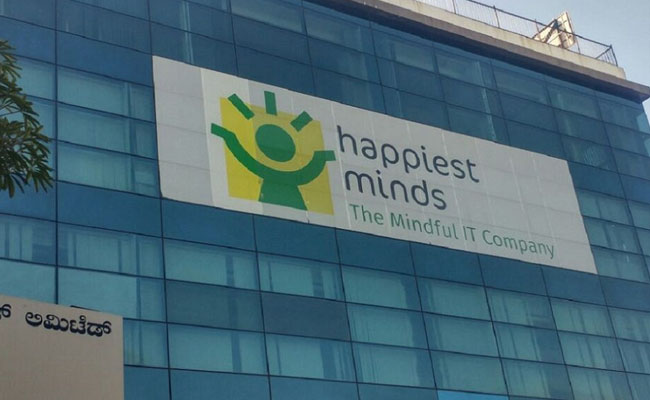
Happiest Minds brings in an innovative GenAI chatbot
Happiest Minds Technologies has announced the new GenAI chatbot - ‘hAPPI...

Government mandates encryption for CCTV cameras to ensure netw
In the wake of issuing an internal advisory on securing CCTV cameras at g...
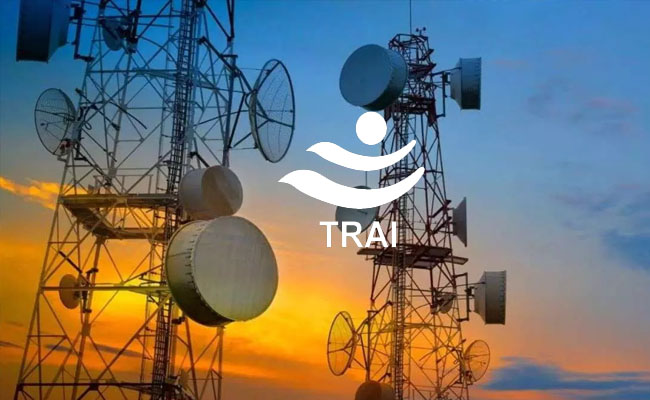
TRAI recommends allowing only Indian entities to participate i
The Telecom Regulatory Authority of India (TRAI) has recommended that onl...

Galaxy AI is available on more devices with Samsung One UI 6.1
Samsung has expanded the range of smartphones to which One UI 6.1 and Gala...


Technology Icons Of India 2023: Ajit Balakrishnan
The Company markets specific channels, community features, local langu...
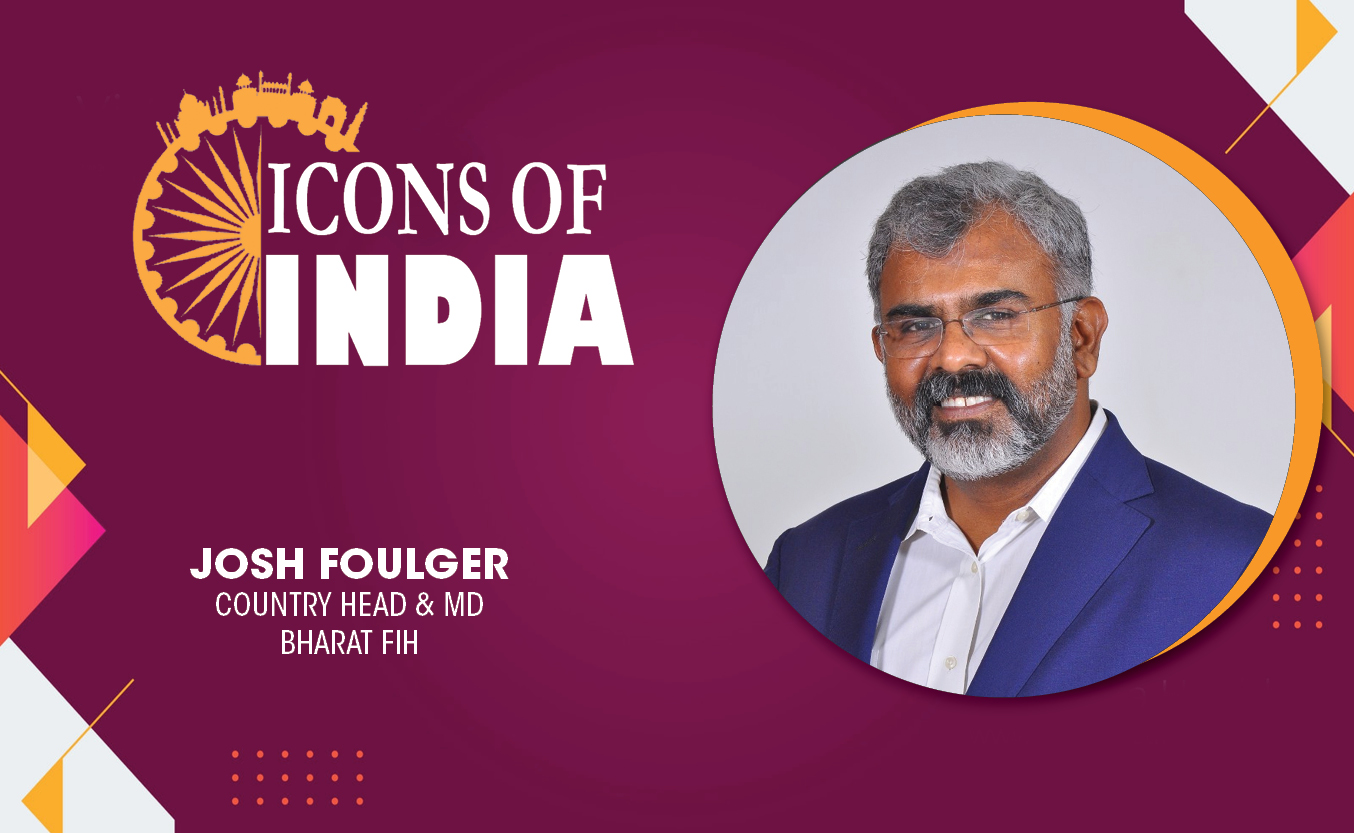
Technology Icons Of India 2023: Josh Foulger
Josh is the Country Head of India and MD of Bharat FIH Ltd (A Foxconn ...
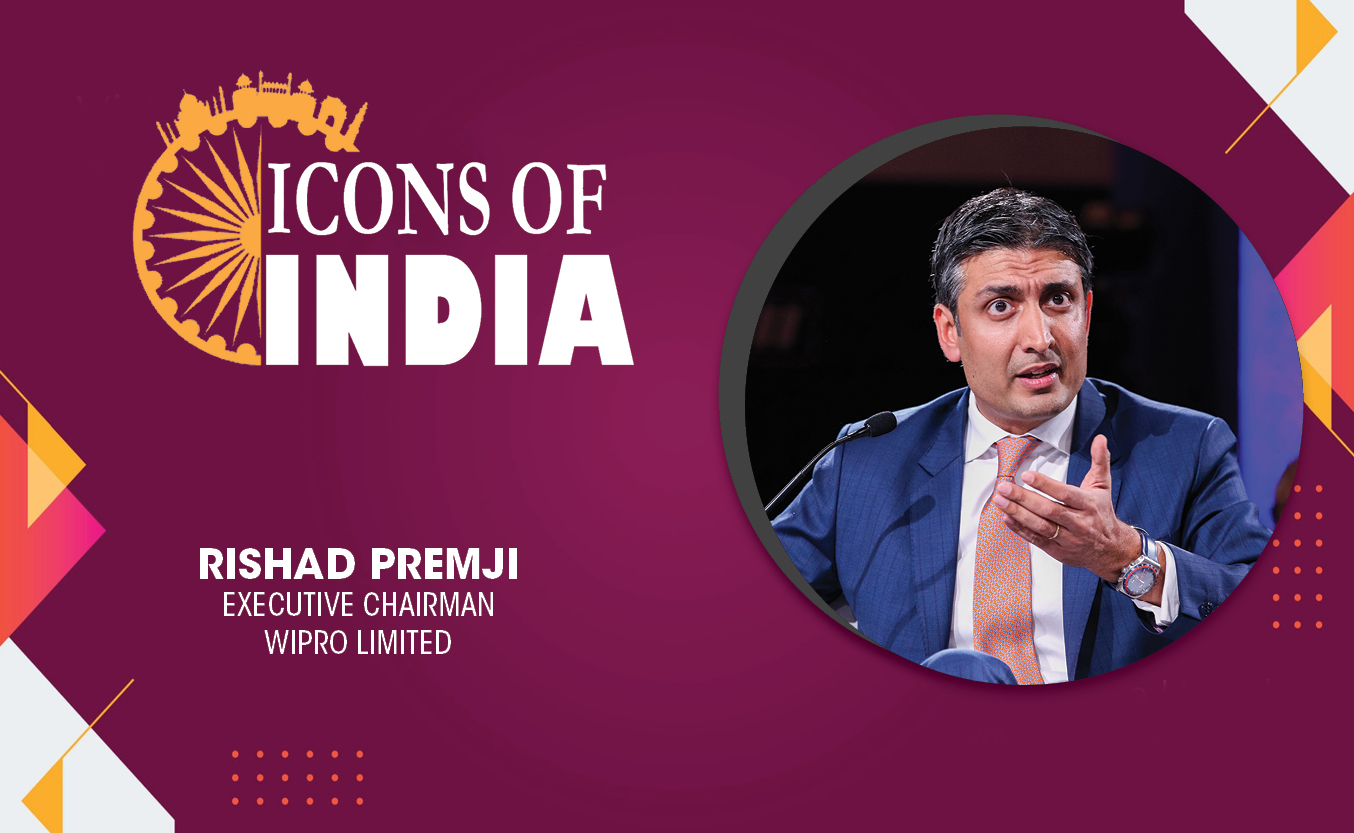
Technology Icons Of India 2023: Rishad Premji
Rishad Premji is the son of the Wipro head Azim Premji and was named a...

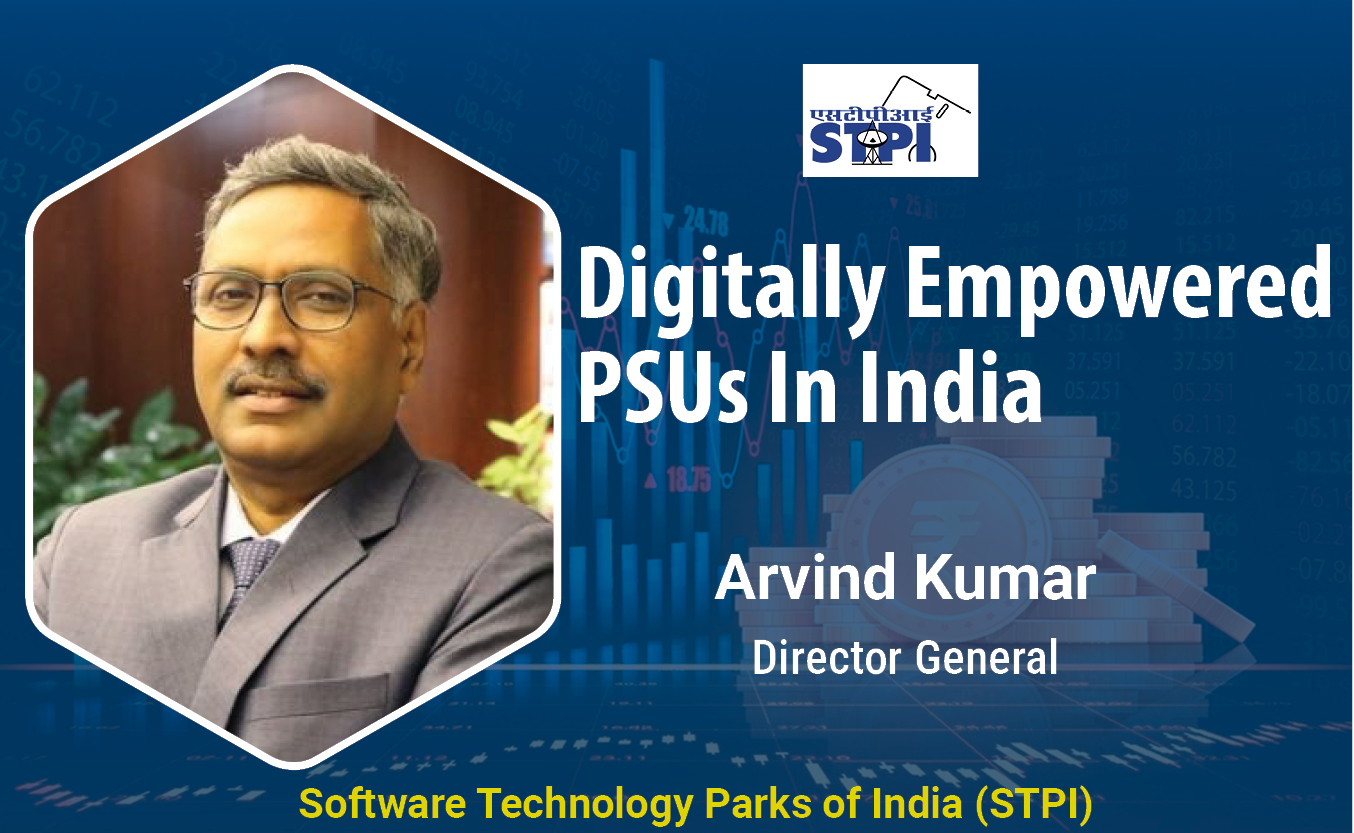
STPI encouraging software exports from India
Software Technology Parks of India (STPI) is an S&T organization under...
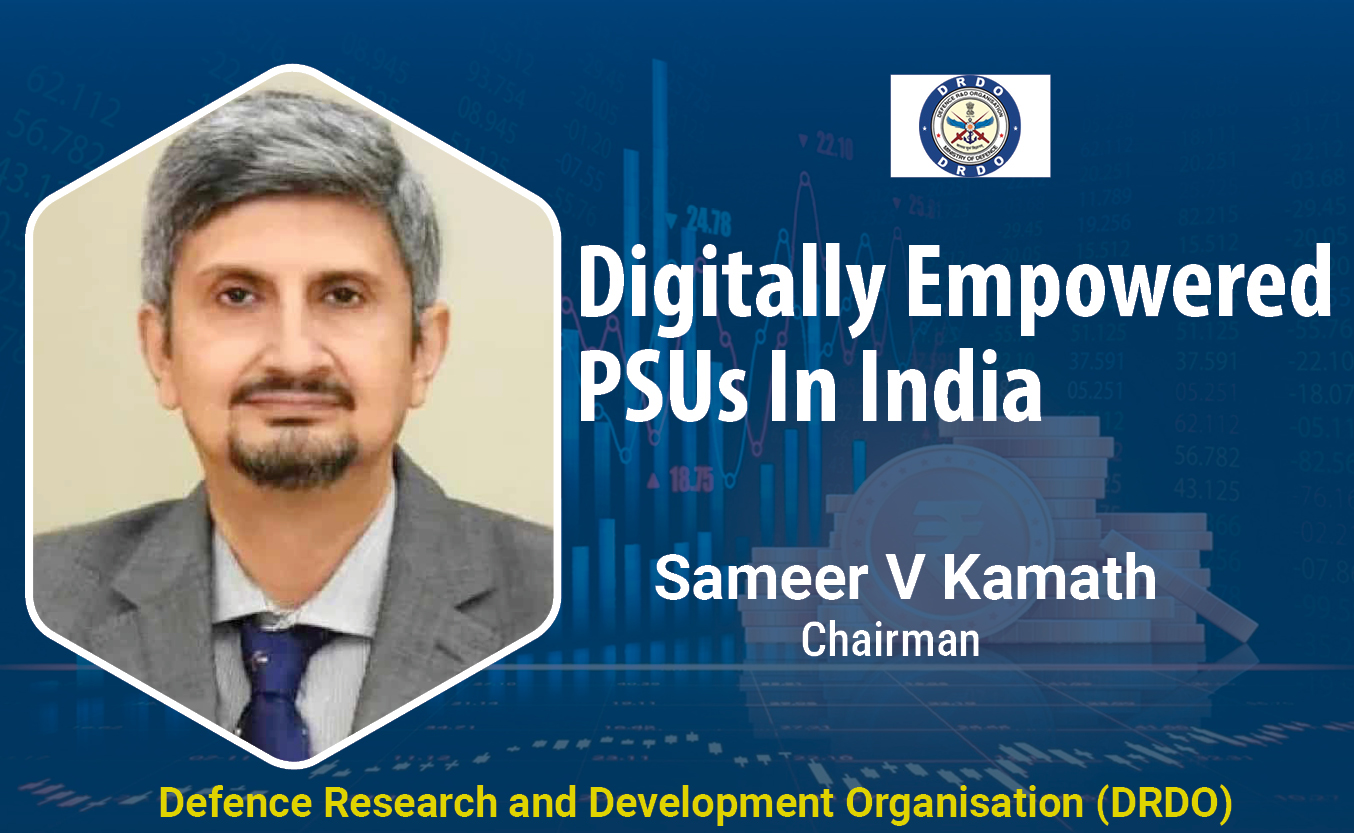
DRDO is India's largest and most diverse research organisation
DRDO is the R&D wing of Ministry of Defence, Govt of India, with a vis...
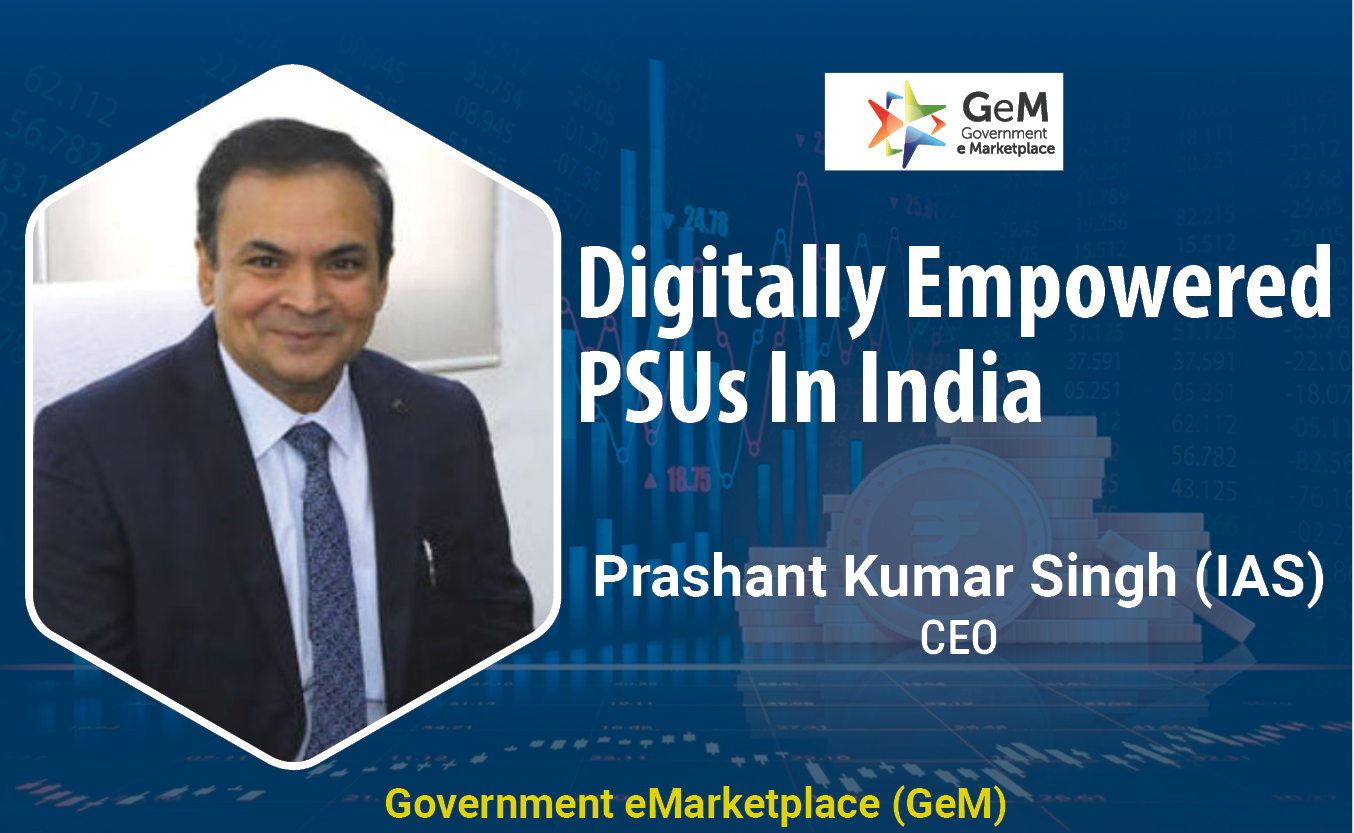
GeM maintains transparency in online procurement of goods & services
Created in a record time of five months, Government eMarketplace is a ...

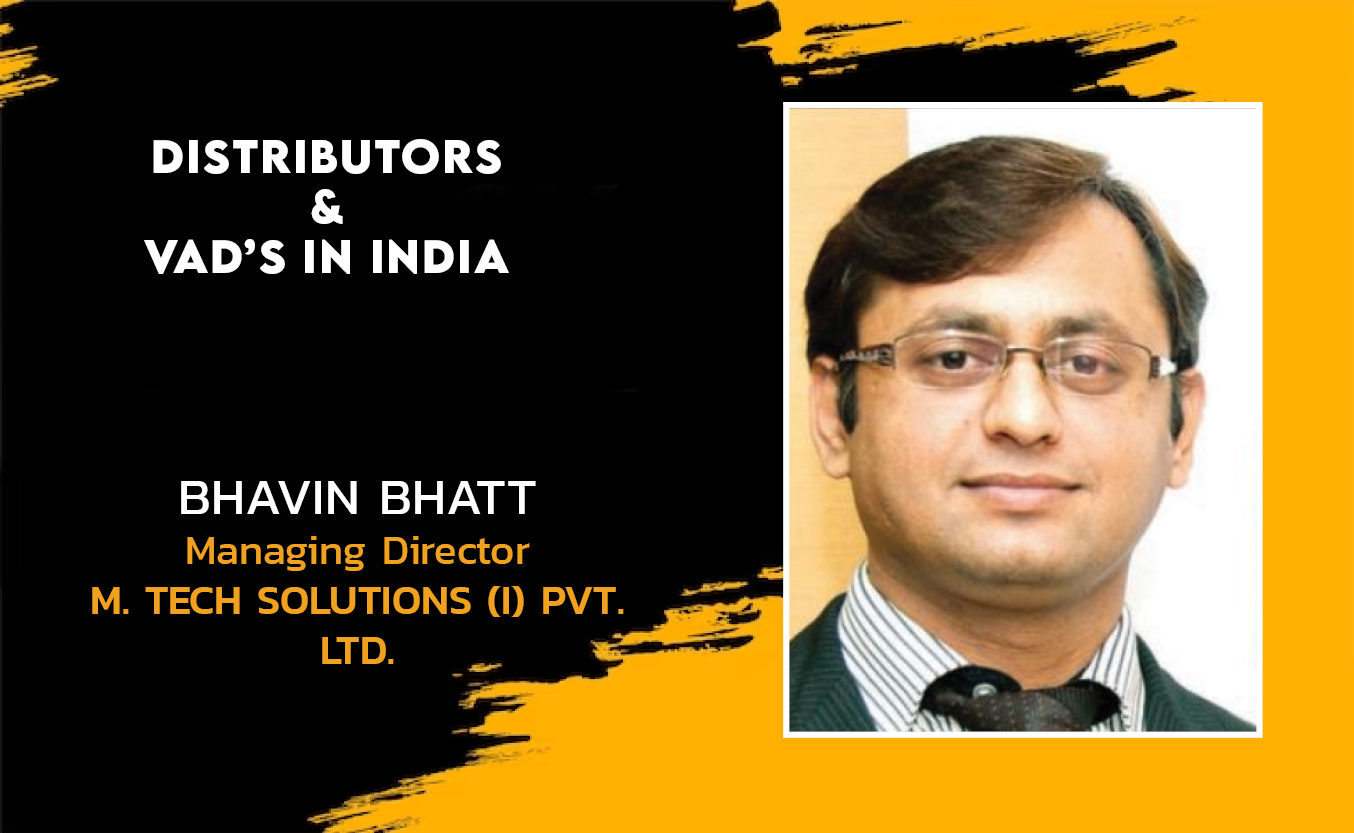
M. TECH SOLUTIONS (I) PVT. LTD.
M.Tech is a leading cyber security and network performance solutions ...
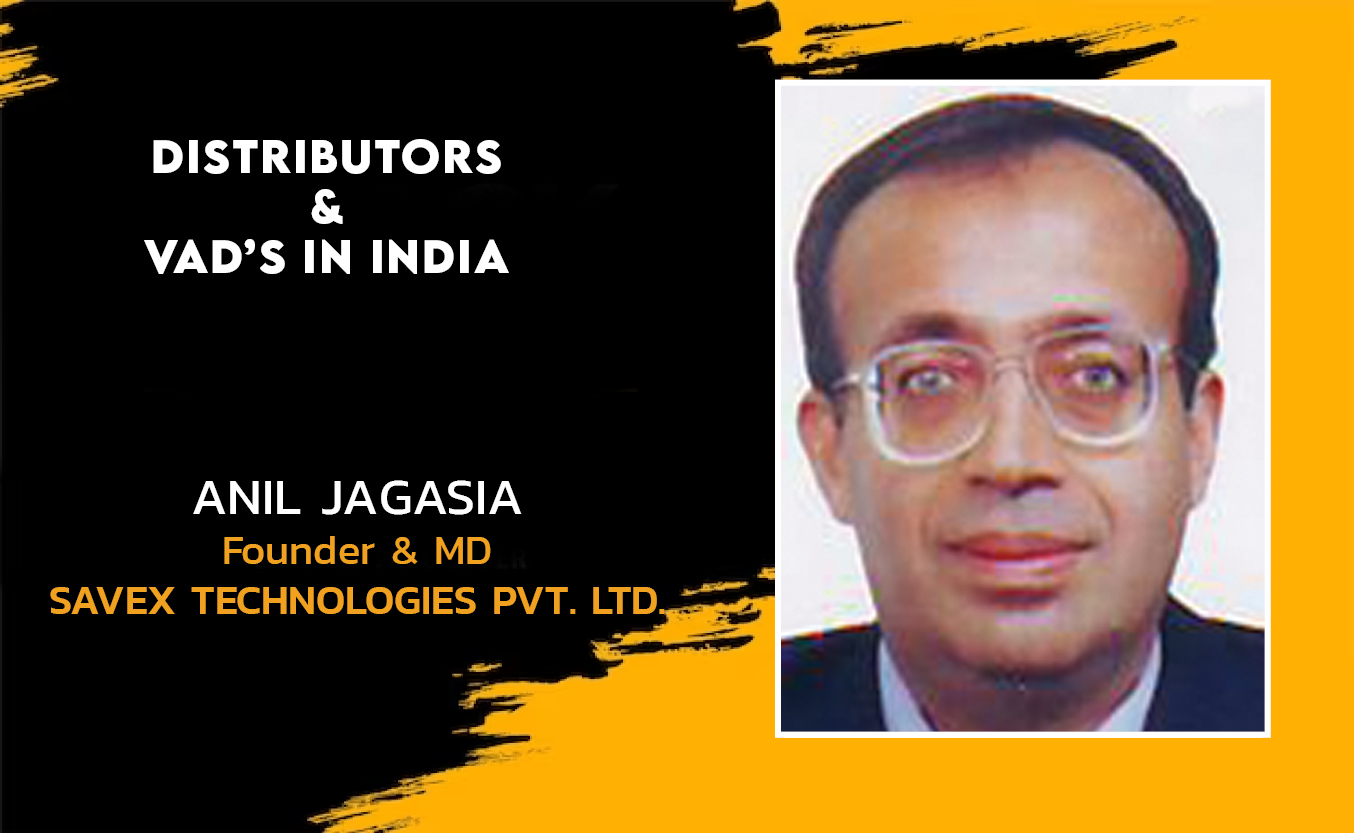
SAVEX TECHNOLOGIES PVT. LTD.
Savex Technologies is the 3rd largest Information & Communication Tec...
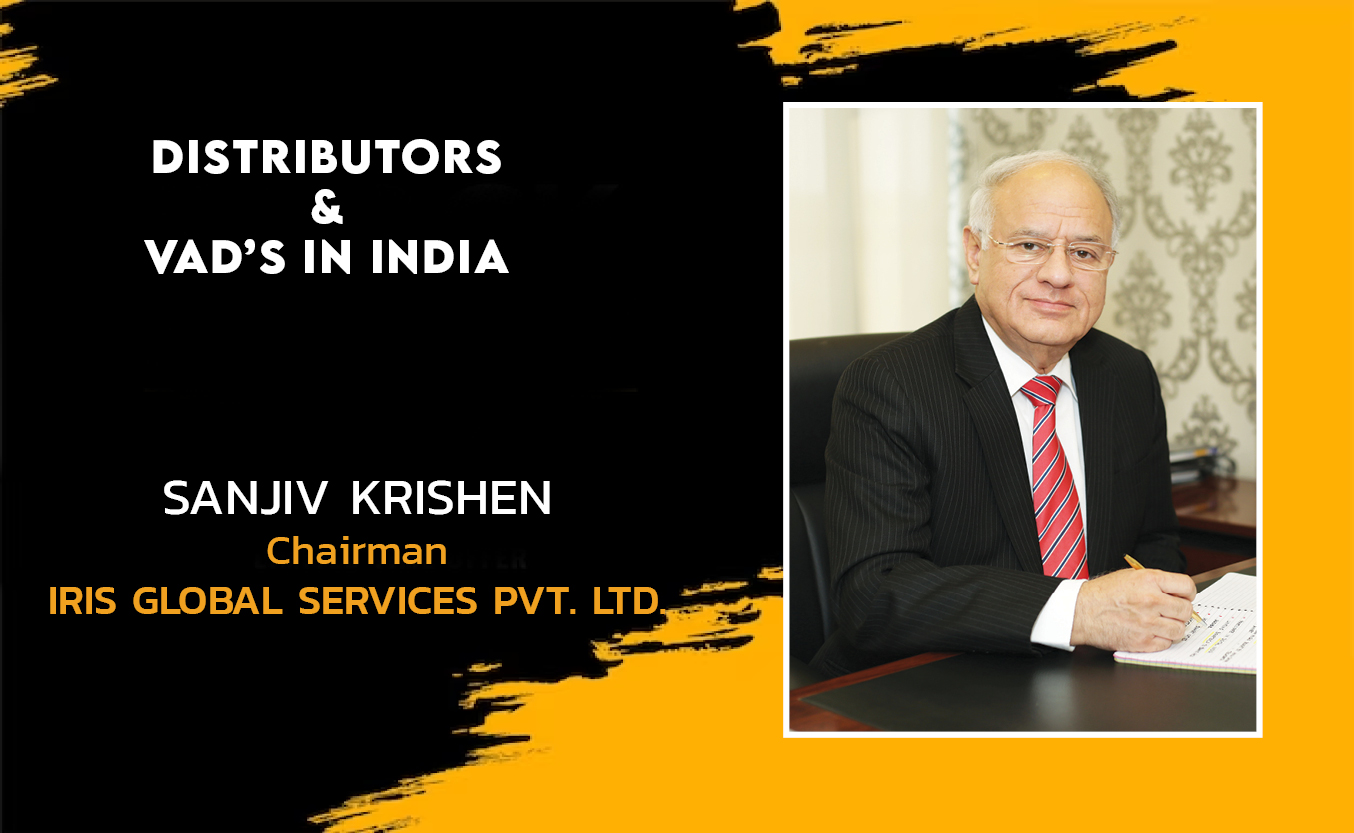
IRIS GLOBAL SERVICES PVT. LTD.
Iris Global services is one of the leading distribution houses that d...